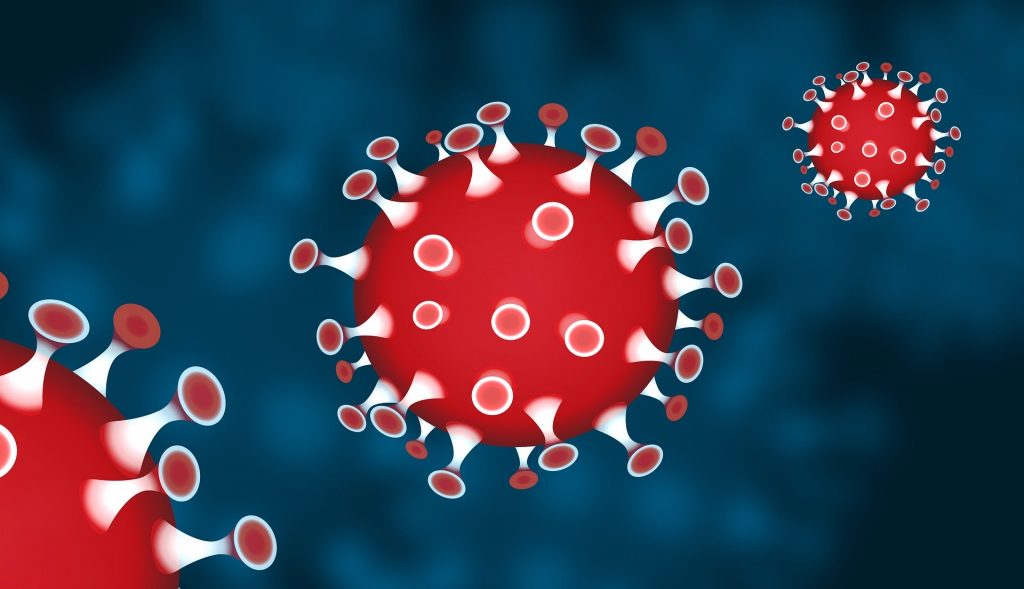COVID-19 transmission

Cheryl Guttman Krader
Published: Sunday, May 10, 2020
 Image by Vektor Kunst from Pixabay[/caption]
Authors of a recent study determined that COVID-19 might be most transmissible before infected individuals even develop symptoms.
Conducted by Xi He MD, Guangzhou Medical University, Guangzhou, China, and colleagues, the research was published online in the journal Nature Medicine on April 15, 2020.
https://www.medrxiv.org/content/10.1101/2020.04.09.20058941v1
Based on their findings, Xe et al recommended that strategies for controlling the spread of COVID-19 should be adjusted to account for probable substantial presymptomatic transmission. Noting that the effectiveness of measures that are instituted when individuals become symptomatic are reduced in the setting of significant presymptomatic transmission, they urged consideration be given to developing more inclusive criteria for contact tracing to capture transmission events two-to-three days before symptom onset
Commenting on the report, Anthony L. Komaroff, MD, Founding Editor, NEJM Journal Watch General Medicine, also observed that the findings suggest aggressive contact tracing will be critical for controlling spread of COVID-19 whereas quarantining will be less effective than it was for containing SARS, a disease for which peak infectiousness occurs seven-to-10 days after symptom onset.
The Chinese researchers used data from two patient cohorts to investigate when during the course of COVID-19 the causative viral pathogen is most transmissible. First they analysed viral loads on a total of 414 throat swabs obtained from 94 patients with laboratory-confirmed COVID-19. All of the patients had been hospitalised and were classified as being moderately ill. The swabs were first obtained at the time of symptom onset and for a period ranging up to 32 days.
The results showed that viral loads on the swabs were highest for specimens collected soon after symptom onset, decreased rapidly over the next seven days and then fell towards the detection limit after about 21 days.
For the second part of their study, the researchers calculated the serial interval (time between symptom onset of successive cases in a transmission chain) using data from 77 pairs of index and secondary cases. They found the mean serial interval between the cases in the transmission pairs was 5.8 days and the median was 5.2 days.
Assuming the incubation period averages 5.2 days, they determined that infectiousness begins 2.3 days before symptom onset and reaches its peak at 0.7 days before symptom onset. According to their modeling, Xe et al determined that in settings where transmission occurred among household contacts, 44% of secondary cases became infected during a period when the index case was still asymptomatic. The authors cited a previous study reporting even higher presymptomatic transmission rates of 48% and 62%.
Image by Vektor Kunst from Pixabay[/caption]
Authors of a recent study determined that COVID-19 might be most transmissible before infected individuals even develop symptoms.
Conducted by Xi He MD, Guangzhou Medical University, Guangzhou, China, and colleagues, the research was published online in the journal Nature Medicine on April 15, 2020.
https://www.medrxiv.org/content/10.1101/2020.04.09.20058941v1
Based on their findings, Xe et al recommended that strategies for controlling the spread of COVID-19 should be adjusted to account for probable substantial presymptomatic transmission. Noting that the effectiveness of measures that are instituted when individuals become symptomatic are reduced in the setting of significant presymptomatic transmission, they urged consideration be given to developing more inclusive criteria for contact tracing to capture transmission events two-to-three days before symptom onset
Commenting on the report, Anthony L. Komaroff, MD, Founding Editor, NEJM Journal Watch General Medicine, also observed that the findings suggest aggressive contact tracing will be critical for controlling spread of COVID-19 whereas quarantining will be less effective than it was for containing SARS, a disease for which peak infectiousness occurs seven-to-10 days after symptom onset.
The Chinese researchers used data from two patient cohorts to investigate when during the course of COVID-19 the causative viral pathogen is most transmissible. First they analysed viral loads on a total of 414 throat swabs obtained from 94 patients with laboratory-confirmed COVID-19. All of the patients had been hospitalised and were classified as being moderately ill. The swabs were first obtained at the time of symptom onset and for a period ranging up to 32 days.
The results showed that viral loads on the swabs were highest for specimens collected soon after symptom onset, decreased rapidly over the next seven days and then fell towards the detection limit after about 21 days.
For the second part of their study, the researchers calculated the serial interval (time between symptom onset of successive cases in a transmission chain) using data from 77 pairs of index and secondary cases. They found the mean serial interval between the cases in the transmission pairs was 5.8 days and the median was 5.2 days.
Assuming the incubation period averages 5.2 days, they determined that infectiousness begins 2.3 days before symptom onset and reaches its peak at 0.7 days before symptom onset. According to their modeling, Xe et al determined that in settings where transmission occurred among household contacts, 44% of secondary cases became infected during a period when the index case was still asymptomatic. The authors cited a previous study reporting even higher presymptomatic transmission rates of 48% and 62%.